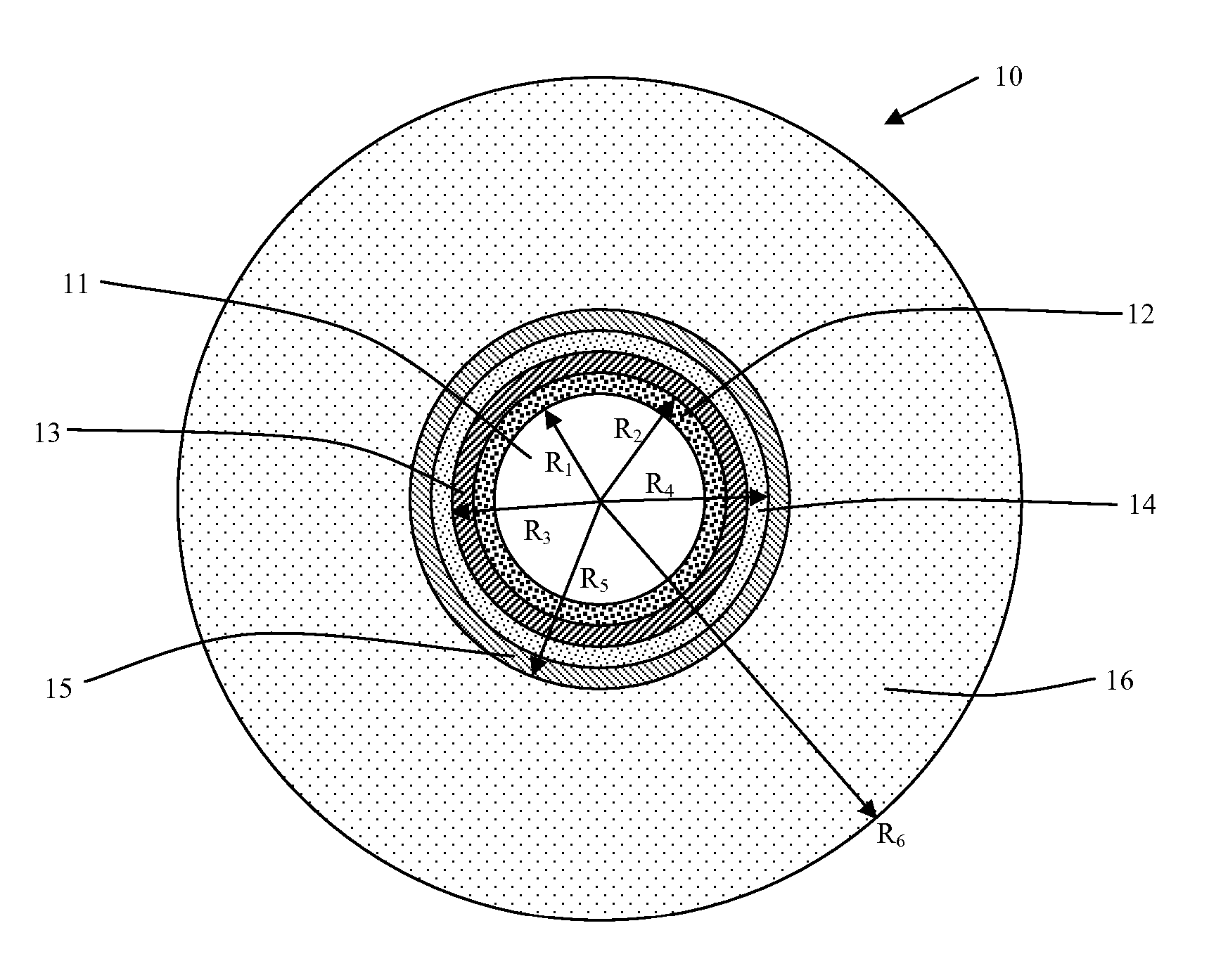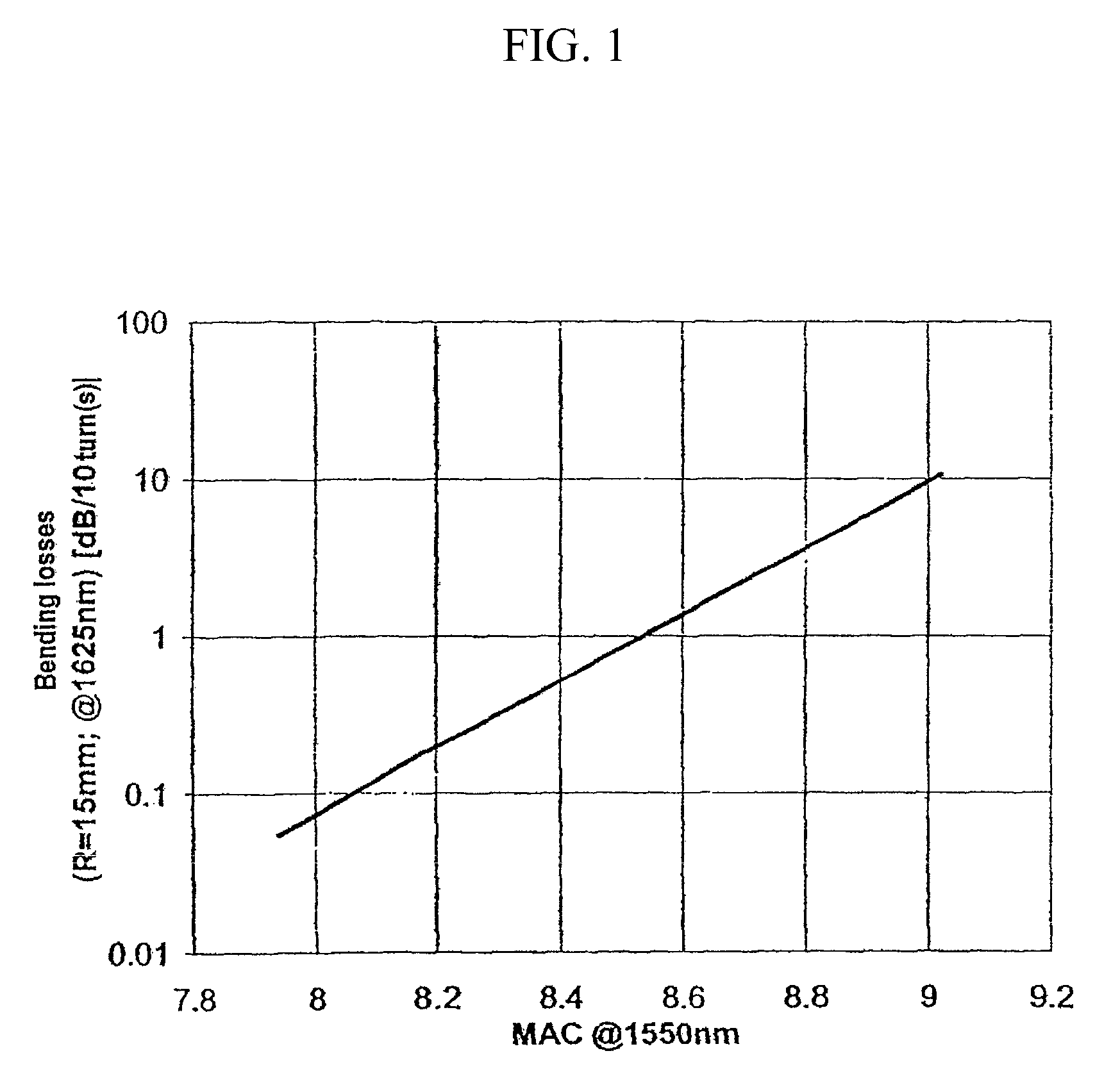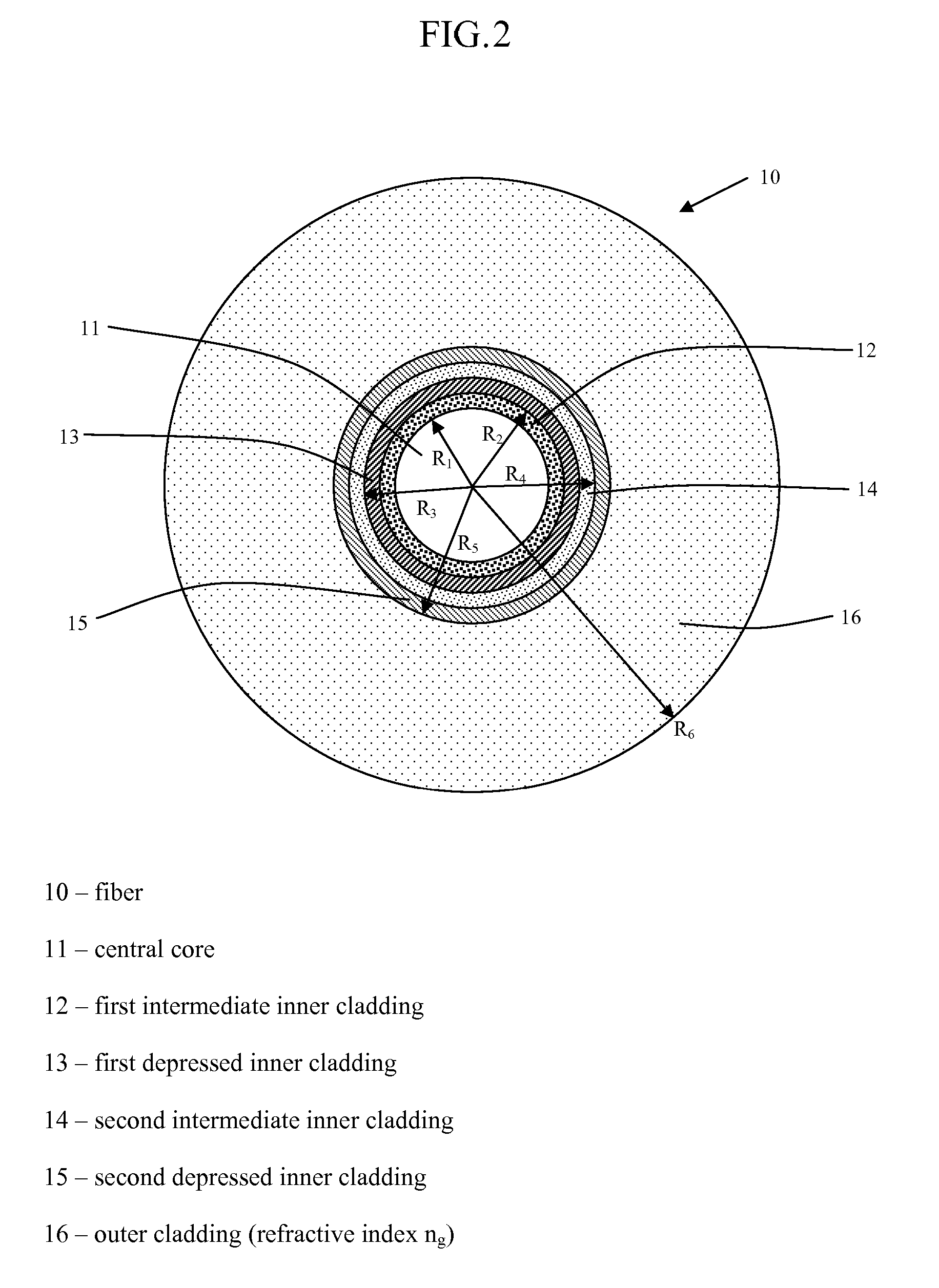Single-mode optical fiber
a single-mode, optical fiber technology, applied in the field of line fiber, can solve the problems of fiber being subject to harsh installation constraints, fiber being commercially incompatible with certain transmission systems, and slightly different profiles, and achieve the effect of reducing bending losses and reducing leakage modes
- Summary
- Abstract
- Description
- Claims
- Application Information
AI Technical Summary
Benefits of technology
Problems solved by technology
Method used
Image
Examples
Embodiment Construction
[0041]With reference to FIG. 2, the fiber 10 of the invention has a central core 11, a first intermediate inner cladding 12, and a first depressed inner cladding 13. The fiber also has a second intermediate inner cladding 14 and a second depressed inner cladding 15. By depressed inner cladding, it is meant that a radial portion of the fiber 10 has a refractive index less than the index of the outer optical cladding 16. The first depressed inner cladding 13 has an index difference with the outer optical cladding 16 that is typically less than −5×10−3 but that may reach −15×10−3. The second depressed inner cladding 15 has a smaller index difference with the outer cladding 16 than with the first depressed inner cladding 13; this index difference is typically between −0.3×10−3 and −3×10−3.
[0042]As will be appreciated by those having ordinary skill in the art, FIG. 2 is a schematic representation of an exemplary fiber. FIG. 2 is intended to depict the relative positions of the central co...
PUM
 Login to View More
Login to View More Abstract
Description
Claims
Application Information
 Login to View More
Login to View More - R&D
- Intellectual Property
- Life Sciences
- Materials
- Tech Scout
- Unparalleled Data Quality
- Higher Quality Content
- 60% Fewer Hallucinations
Browse by: Latest US Patents, China's latest patents, Technical Efficacy Thesaurus, Application Domain, Technology Topic, Popular Technical Reports.
© 2025 PatSnap. All rights reserved.Legal|Privacy policy|Modern Slavery Act Transparency Statement|Sitemap|About US| Contact US: help@patsnap.com



